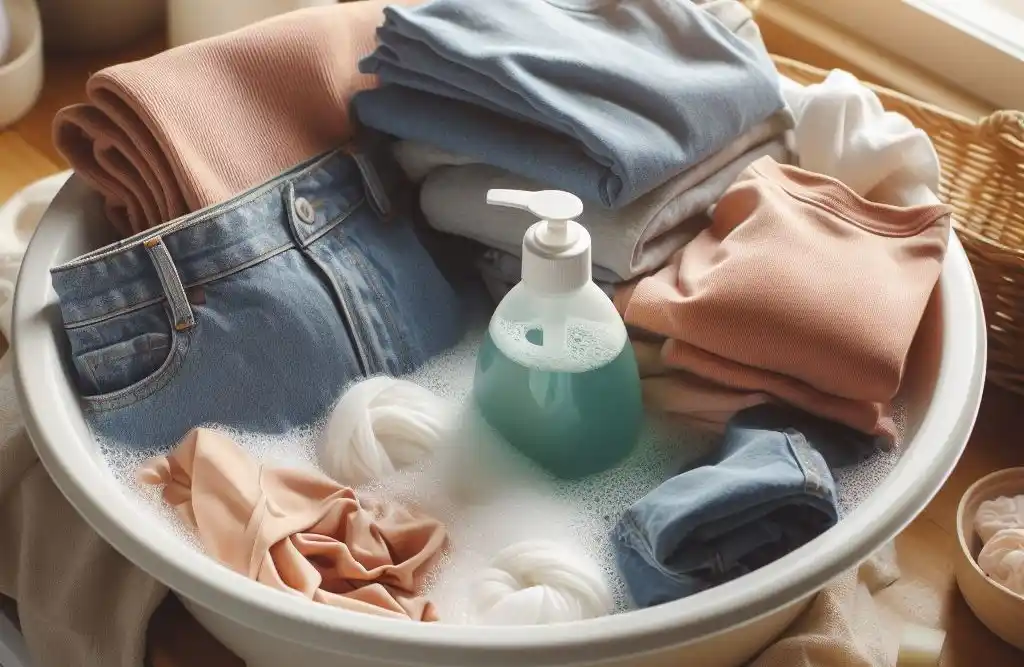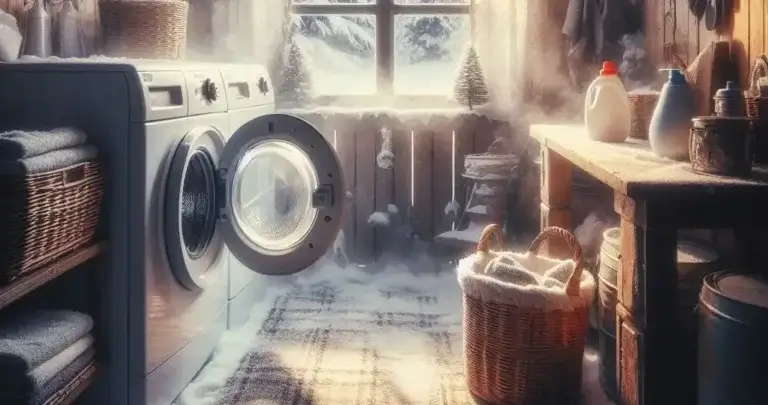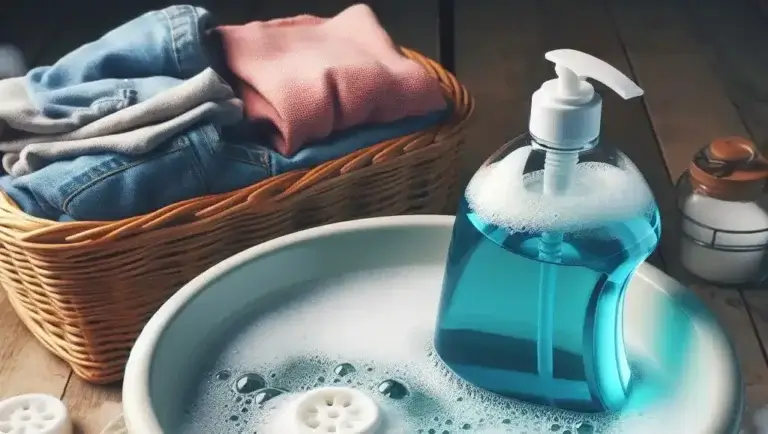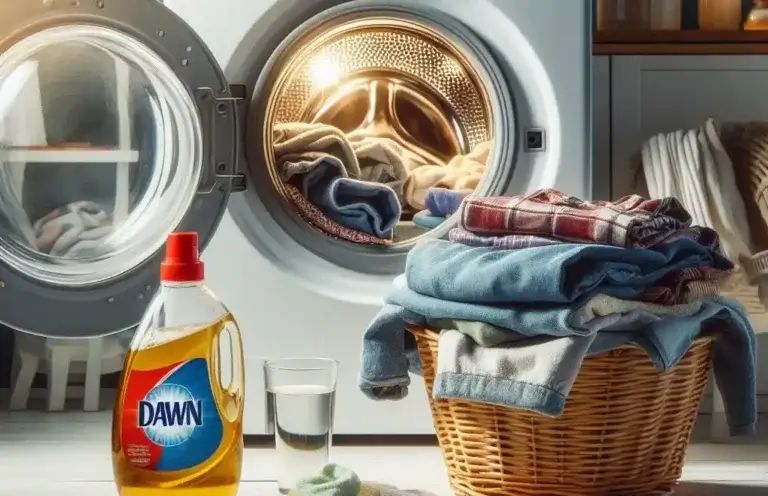Can You Wash Socks and Clothes Together? The Definitive Guide
Washing laundry can be a tedious chore. As you sort through piles of dirty clothes, you may wonder – can I just throw everything in the washing machine together? Or do socks and other delicate items need special treatment?
This definitive guide will give you expert advice on whether can you wash socks and clothes together. You’ll learn:
- The pros and cons of washing socks with other clothes
- Best practices for keeping socks clean and intact
- Special considerations for fabric type, color, stains, and more
- Tips to prevent socks from losing their shape or wearing out prematurely
- How water temperature and laundry cycles impact delicates
- Common mistakes to avoid when doing sock laundry
So should you toss your socks in with the rest of the wash? Or is it best to wash them separately? Read on to find out!
Table of Contents
Is It Okay to Wash Socks With the Rest of Your Laundry?
Simply put, you can wash socks with other laundry items. However, there are a few caveats.
Washing socks together with the rest of your clothes is generally safe if you:
- Use a gentle laundry cycle
- Wash with cold or warm (not hot) water
- Avoid overloading the washing machine
Washing socks alongside rougher fabrics can cause pilling, snags, and faster wear. The friction and agitation inside a crowded washer is tough on delicate sock material.
However, with some precautions, combining your sock laundry can save time and effort.
Here’s a closer look at the tradeoffs of washing socks with regular clothes:
Pros
- It’s more convenient. Tossing everything in at once means fewer loads of laundry.
- Socks help bulk up small loads. Throwing in a few pairs helps wash regular clothes more effectively.
- It works fine for durable socks. Thick athletic socks can typically handle a normal wash cycle.
Cons
- Delicate socks may get damaged. Silk, wool, or thin socks are better washed separately.
- Colors may bleed. White socks washed with brightly colored items risk dye transfer.
- Socks may fade faster. Frequent washing, hot water, and bleach can degrade fabric and elasticity over time.
- They may lose their shape. The rough tumble of a crowded wash can misshape knitted socks.
Now that you know the main considerations, let’s go over some best practices for washing your socks properly…
How to Wash Socks Properly: 10 Tips

Follow these expert laundry tips to keep your socks looking and feeling like new:
1. Check the Sock’s Care Label
The first step is to read your socks’ care instructions. Tags guide safe water temperatures, cycles, and drying methods.
If there’s no label, choose gentle settings for delicates. When in doubt, err on the side of caution.
2. Wash Similar Colors and Fabrics Together
Sort your laundry by color and texture before washing. Group socks in:
- Whites
- Lights
- Colors
- Textiles like wool or silk
This helps prevent bleeding from bright dyes onto paler socks. And fabrics of comparable sturdiness won’t cause excess pilling or wear.
3. Use a Mesh Bag for Easy Pair Matching
Mesh laundry bags are a sock saver! Toss socks directly into the bag so they’ll stay together in the wash. After drying, matches are intact for easy pairing. No more lonely singles!
4. Wash With Cold or Warm Water
Hot water can damage elastic and fade colors over time. Use the coolest temp recommended for the fabric, or cold water for most loads.
Add an extra rinse cycle to remove detergent instead of washing in hot water.
5. Avoid Chlorine Bleach
While bleach tackles tough stains, it can also degrade fabrics with frequent use.
Skip the bleach on sock loads, and use an oxygen-based whitener if needed. Or try soaking stained socks before washing them.
6. Use a Gentle Laundry Detergent
Harsh cleansers blast out stains but can be rough on delicates. Choose a gentle sock detergent, like those made especially for babies, wool, or silk items.
7. Skip Fabric Softener
While softener sheets give clothes a fluffy feel, they can affect moisture-wicking properties in performance socks. The coating they leave behind reduces breathability.
So it’s best to skip the softener and dryer sheets when washing athletic socks.
8. Shake Socks Out Before Drying
Before moving socks to the dryer, shake them out and smooth any bunched-up areas. This helps them keep their shape rather than drying scrunched.
You can also lay flats and delicates out to air dry if preferred.
9. Dry Thoroughly on Low Heat
High temperatures can damage sock fibers and melt synthetic blends. Use the lowest heat setting, and don’t over-dry.
If air drying, make sure socks fully dry before wearing or storing to prevent mildew.
10. Fold Properly to Avoid Stretching
Carefully fold socks over a hanger or rack after drying, pairing any mates first. Avoid bunching them or folding them roughly in half, which can loosen elastic.
Now that you know how to wash socks the right way, let’s go over when it’s best to wash them separately…
Can You Wash Socks and Clothes Together – Solution

The humble sock, often cast aside after heroic journeys through mud, sweat, and questionable footwear choices, raises a crucial laundry question: can we wash them alongside our beloved shirts and trousers? The answer, like most things in life, isn’t a simple yes or no. Let’s delve into the great sock-and-clothes cohabitation debate!
The Case for Togetherness:
- Convenience: Throwing everything in one load saves time and energy, a siren song for busy bees.
- Modern Detergents: Today’s powerful formulas tackle dirt across fabrics and temperatures, often negating the need for separation.
- Cold Water Cleans: Many clothes (and most socks) require cold washes, eliminating concerns about hot water shrinking socks or fading garments.
- Similar Fabrics: If your socks and clothes share similar materials like cotton or blends, they might tolerate the same wash cycle.
The Case for Segregation:
- Hygiene Concerns: Socks harbor bacteria (hello, sweaty feet!), potentially transferring it to delicate clothes.
- Color Run: Brightly colored socks can bleed dyes, staining lighter garments in the wash.
- Fabric Friction: Rough textures like denim can snag and damage delicate sock fibers.
- Hot Water Havoc: Some clothes require hot water for proper cleaning, which can shrink or damage most socks.
The Verdict: A Nuanced Approach
While washing socks and clothes together isn’t inherently wrong, it’s best to proceed with caution:
- Consider Colors: Separate dark socks from light clothes to avoid dye transfer.
- Check Fabric Labels: Always follow garment care instructions, especially for delicates.
- Temperature Matters: Opt for a cold wash cycle suitable for both socks and clothes.
- Size Matters: Wash bulky socks separately to avoid tumbling clothes around.
- The Odor Factor: Extremely smelly socks might benefit from a pre-wash soak before joining the clothes party.
Bonus Tips:
- Invest in mesh laundry bags to protect socks and keep them paired (goodbye, lonely sock syndrome!).
- Use a gentle detergent formulated for sensitive skin to minimize potential irritation from sock bacteria.
- Air-dry socks whenever possible to extend their lifespan and prevent shrinkage.
Ultimately, the decision to wash socks and clothes together boils down to personal preference and a healthy dose of common sense. By listening to your fabrics, respecting their cleaning needs, and employing a few strategic maneuvers, you can achieve laundry harmony where socks and clothes coexist happily… until the next wash cycle, that is!
Remember, laundry is a journey, not a destination. Experiment, adapt, and most importantly, have fun conquering the mountain of your dirty clothes!
When You Should Wash Socks Separately from Other Laundry
While you can wash most socks with regular clothes, some situations call for separate sock loads:
1. Delicate Dress Socks
Fragile socks made of fine wool, silk, or cashmere require a gentle cycle. Use a lingerie bag and mild detergent to prevent snagging threads.
2. Bright White Athletic Socks
Heavily soiled sports socks may need bleach to come fully clean. Washing them separately prevents bleeding onto other laundry items.
3. New Non-Prewashed Socks
Brand-new socks often have excess dye that runs initially and requires a few washes before it sets. Wash new socks solo before adding them to another laundry.
4. Small Batch of Lightly Soiled Socks
If you just have a couple of pairs of socks that worn once, don’t wait for a full load. The less they sit around dirty, the better!
Washing socks properly the first time prevents stains from setting and bacteria from growing.
Next, let’s go over the biggest mistakes to avoid when washing your socks…
5 Common Sock Washing Mistakes to Avoid
It’s easy for socks to end up faded, misshapen, or full of holes over time. Avoid these laundry mishaps:
1. Crowding the Washer
Too many clothes in one load causes pilling and premature wear. Leave room for garments to move around freely.
2. Using Harsh Detergent
Some cleansers have additives and brighteners that are too abrasive for delicates when used regularly. Stick to a gentler formula made for sensitives.
3. Mixing Fabrics
Laundering soft cotton with scratchy jeans creates excess friction. Group similarly textured items together.
4. Washing in Hot Water
While higher temps blast out oils and sweat, they also break down elastic and fibers. Use warm or cold washes whenever possible.
5. Over Drying
Too much heat damages sock fabrics and causes them to shrink. Don’t over-dry batches, and use medium or low heat.
Avoiding these common laundry pitfalls helps your socks stay soft, springy, and sturdy through hundreds of wears.
Now that you know how to wash socks correctly alongside your other laundry, let’s go over some special use cases…
How to Wash Specific Types of Socks
Caring for specialty socks takes extra attentiveness. Follow these tips when laundering:
Athletic Socks
Performance socks have special sweat-wicking and anti-odor properties. Help them last by:
- Turning them inside out before washing
- Using antibacterial detergent
- Air drying instead of the dryer
- Storing in a cool, dry place to avoid mildew
Wool Socks
Sheepskin and wool blends handle gently, making them prone to shrinking. To prevent damage:
- Hand wash or use the delicates cycle
- Lay flat or block to air dry, away from direct heat
- Store properly folded or on hangers to avoid stretching
Silk and Lace Socks
Luxurious fabrics require the most care. To prevent snags and holes:
- Place in a **mesh wash bag **before machine washing
- Hand wash in cool water when possible
- Dry on a flat, non-metal rack if not air-drying
- Fold and store socks carefully without creasing or bunching
White Athletic Socks
The thicker material of sports socks can handle more aggressive washing. Yet over time bleach causes breakdown.
- Skip the bleach when possible
- Use an oxygen-based whitener instead to brighten without damage
- Wash sports socks inside out to protect the outer fabric
No matter the sock type, following fabric care instructions is always the safest bet for keeping them looking their best.
With the right routine, you can keep your sock drawer stocked with pairs that feel and appear brand new, wash after wash.
FAQs: Your Sock Laundry Questions, Answered
Still, have questions about the best way to clean your socks? Here are answers to some commonly asked laundry questions:
Can you put socks in the washer and dryer?
Yes, most socks can safely be placed in the washing machine and dryer using the right settings. Choose a gentle cycle, avoid overloading, wash in cold water, dry on low heat, and promptly remove items when finished.
Why do socks disappear in the wash?
It’s a common laundry mishap – you wash dozens of socks but can only match half the pairs that come out! Using a mesh bag secures loose socks so they stay together as matching sets.
How do you wash white socks to keep them white?
Avoid using chlorine bleach every time, as this weakens fibers over time. Instead, skip bleach washes and occasionally use an oxygen whitener. And be sure to fully dry white athletic socks between wears, so they don’t yellow.
Can you wash and dry wool socks?
Merino wool and other wool blends require very gentle handling to avoid shrinking. Wash them in cold water on the delicate cycle, roll them in a towel to absorb moisture, then lay flat or block them to air dry away from direct heat.
What’s the best temperature to wash colored socks?
Help colored sock retain their hues by washing them in cold water whenever possible. Warm water is also fine for sturdy cotton blends, but use the cool setting for delicate like silk. Adding vinegar to the rinse water further helps bright dyes hold fast wash after wash.
For even more sock laundry advice, check out these guides…
In Conclusion
We hope this guide gave you expert advice on whether you can wash socks with other laundry items. While tossing them in with your regular loads is generally fine, take some precautions to maximize their lifespan.
To recap, key sock-washing tips include:
- Checking labels for proper care
- Washing with like colors and fabrics
- Using mesh bags to keep pairs together
- Choosing cold or warm water
- Skipping harsh detergents and bleach
- Drying thoroughly on low heat
Follow these tips and handle delicates with care to avoid misshaping, holes, stains, and other damage over time. Keep your socks soft and durable year after year with the right laundry routine.
For convenience, save or share this complete guide on washing socks properly so you can refer back whenever sock sorting and laundering questions arise!








